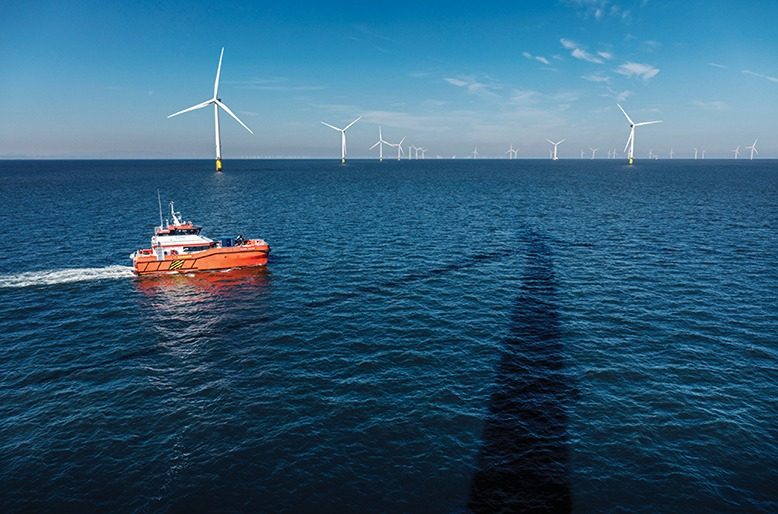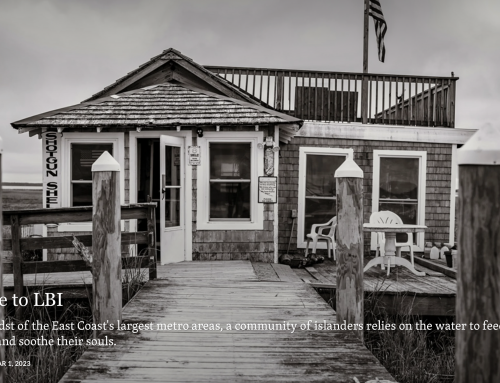Renewables!
I wrote this feature story that appeared in the June issue of New Jersey Monthly. This was one of those “dig in” kind of research pieces, which was kind of nicely timed with quarantine. While there are some new concerns about the underwater power lines and fish migration, I have been told by my best sources that it shouldn’t be a reality. That said, I am very proud that New Jersey is undertaking this project to use renewables.
“The 1,100-megawatt Ocean Wind is among the initial projects to get New Jersey running green. For the project, Ørsted leased 108 acres of open ocean from the U.S. Bureau of Ocean Energy Management (BOEM). The goal is to power some 500,000 New Jersey homes, roughly 15 percent of the state.
“Achieving the governor’s goal of 7,500 megawatts of offshore wind by 2035 will enable us to dramatically reduce the use of fossil fuels and help us combat the severe impacts of climate change,” says Joseph L. Fiordaliso, president of the state’s Board of Public Utilities (BPU). Fiordaliso says the project will also help establish New Jersey as a player in the clean-energy supply chain of the future. This, he says, “will result in a tremendously positive impact on New Jersey’s economy.”
The BPU awarded the project to Ørsted a year ago, but there is still a litany of state and federal approvals required before Ocean Wind can begin construction.
Ørsted built the world’s first offshore wind farm in 1991 off Denmark and has since installed more than 1,350 turbines globally. The U.S. branch of the company is headquartered in Boston, with an office in Atlantic City. Formerly an oil and gas company, Ørsted began developing offshore wind power and divested all of its fossil-fuel holdings in 2018. Today, Ørsted’s projects are all wind, solar and biomass, with a “vision of a world that can run fully on sustainable power.”

Courtesy of Orsted.
The Ocean Wind lease area encompasses 250 square miles, starting eight miles east of the shoreline, but Ørsted has chosen to develop 15 miles offshore to avoid migratory coastal bird routes and reduce visual impact for beachgoers.
Ørsted has developed wind farms on land in some states, including Texas, Nebraska and South Dakota, but company officials say that won’t work here. “We just don’t have enough land area…for the wind to really get up to a speed that makes it efficient to create electricity,” says Ørsted’s Ohleth, a New Jersey native.
The GE-manufactured Haliade-X 12MW turbines to be used in New Jersey will stand nearly 600 feet out of the water. The nacelle, a cap to the aft of the turbine hub, houses all the energy-generating components. Power will run down the tower to an offshore platform (in some cases, multiple platforms), where it will be collected, boosted to a voltage level appropriate for long-distance transmission, and sent ashore via cables buried six feet under the ocean floor, so as not to interfere with commercial longline fishing or dredging.
The first transition station on land will be an underground junction box. From there, underground cables will deliver 800 megawatts of power to a site adjacent to the recently decommissioned Oyster Creek Nuclear Power Plant in Forked River, pending permit. The other 300 MWs will go to a substation in either Atlantic City or Ocean City. Utility companies such as Jersey Central Power & Light and Atlantic City Energy will then sell the energy to their customers.
Estimates indicate that Ocean Wind energy will cost residential ratepayers an additional $1.46 per month to cover the costs of development, construction, operations, maintenance and decommissioning. Peter Peretzman of the BPU notes that “typically, new renewable-energy technology is more expensive than traditional existing technology due to the economies of scale. The cost of offshore wind is expected to decrease with more and more development, and therefore become more competitive in the market.”
Overall, offshore wind is expected to be an economic win for New Jersey. Ocean Wind predicts $1.17 billion in economic benefits to the state and the creation of 15,000 jobs over the life of the project. Also, the state Economic Development Authority has created an Offshore Wind Supply Chain Registry, which will allow companies to bid on supplying components and services for future offshore wind projects.
In February, the Cape May County Chamber of Commerce held an Ocean Winds jobs forum to help fill 3,000 construction jobs and 69 full-time positions in operations and maintenance. And to sweeten the deal, Ørsted has signed a broad, nonbinding agreement to aid the EEW Group, a German manufacturer of turbine foundations, or monopiles, in setting up manufacturing in Paulsboro, in Gloucester County.
“We expect that one or more major components will be fabricated in New Jersey,” says Peretzman. “It is a priority for us to use New Jersey labor and manufacturing.”
Meanwhile, marine surveys have started for a second wind farm, Atlantic Shores, which would run offshore from Atlantic City to Long Beach Island. EDF Renewables North America and Shell formed a 50/50 joint venture to co-develop a lease area with the potential to produce approximately 2,500 megawatts, enough to power almost 1 million homes.”




